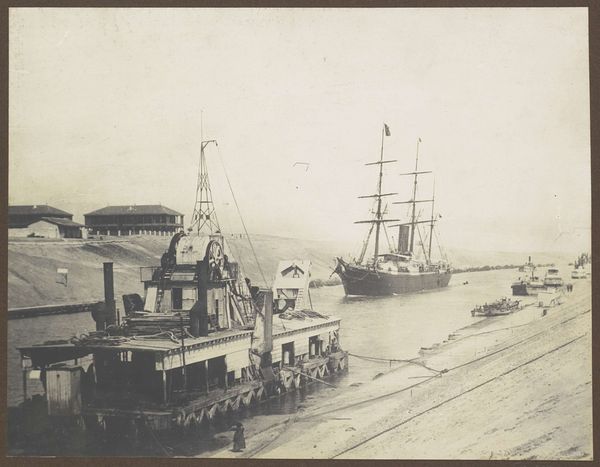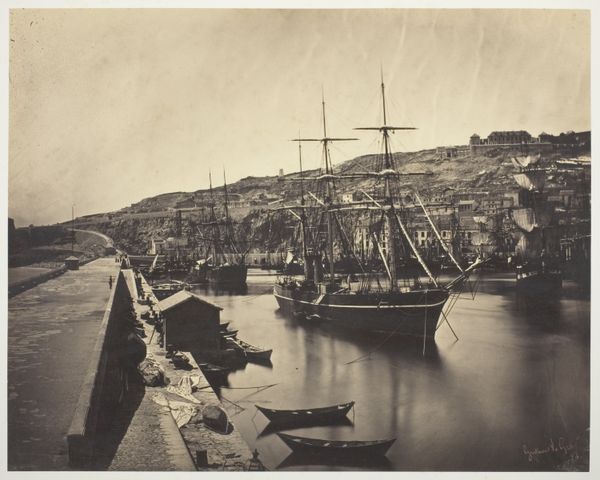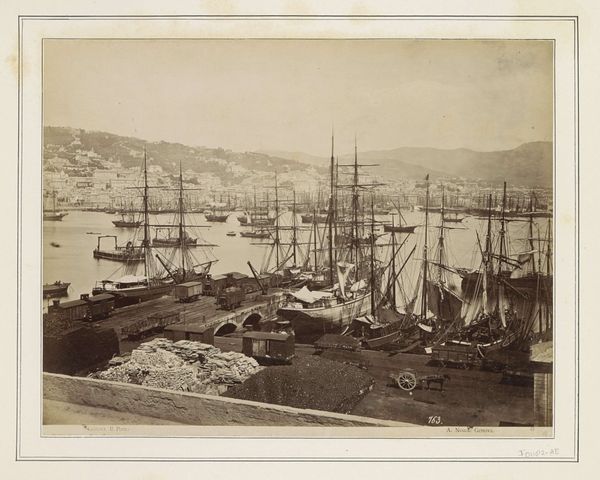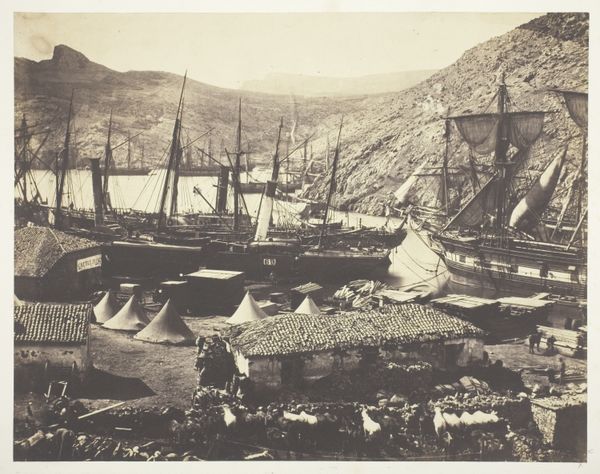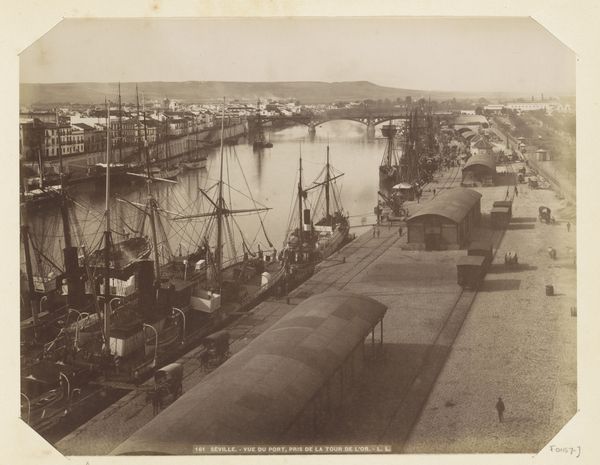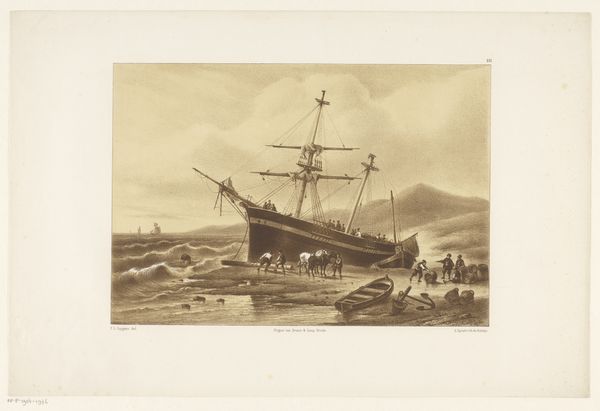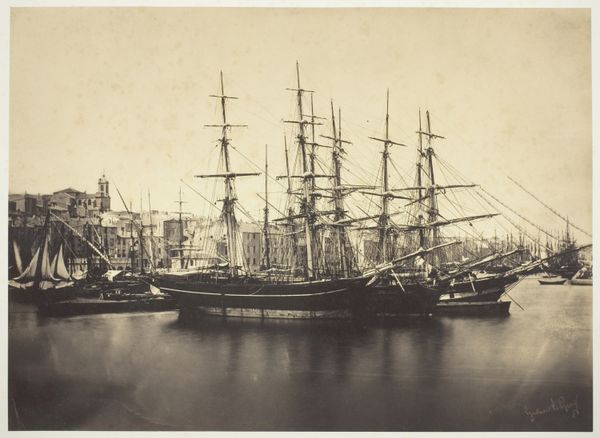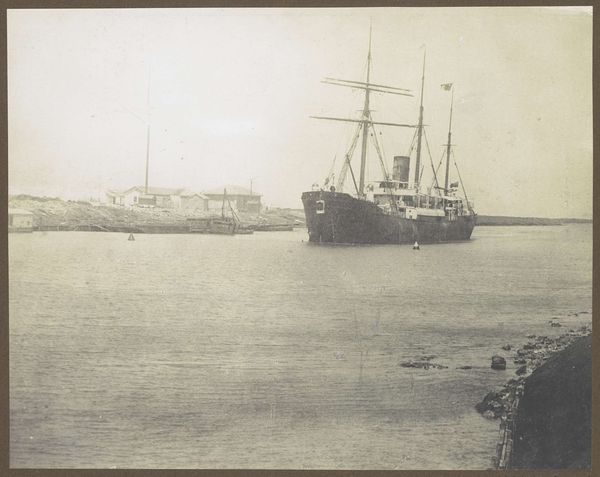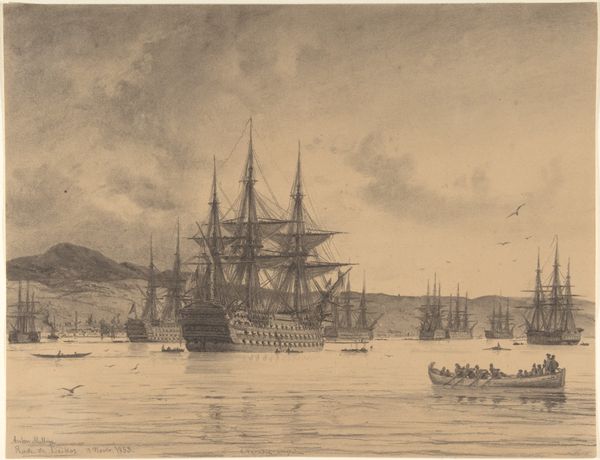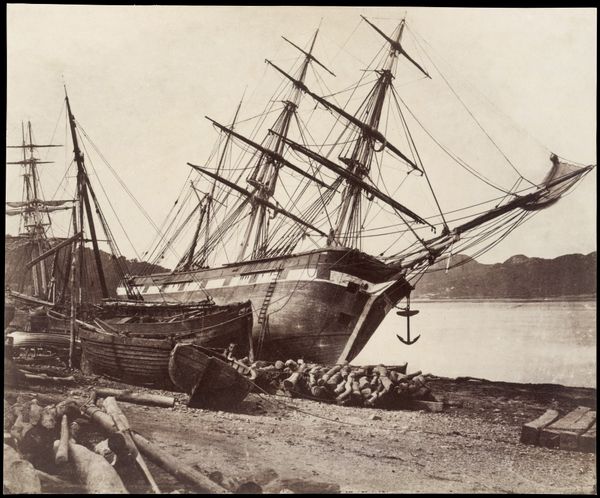
Dimensions: 19.9 × 25.2 cm (image/paper); 40.1 × 53.3 cm (mount)
Copyright: Public Domain
Curator: Roger Fenton's "Head of Harbour, Balaklava," created in 1855, captures a seemingly serene moment amidst the Crimean War. The albumen print, now residing at the Art Institute of Chicago, presents a stark contrast to the violence it indirectly represents. Editor: The photograph's sepia tones lend it an almost dreamlike quality, wouldn't you agree? But the subject matter, a busy harbour with ships and heavy cargo, evokes a sense of underlying tension. Curator: Absolutely. Notice the meticulous composition. Fenton employs a classical landscape structure, dividing the scene into distinct planes: the foreground with men and equipment, the middle ground featuring the ships, and the distant hillside creating a sense of depth. The textures are exquisite. Editor: That organized composition, though, it masks the socio-political context. Balaklava, a vital supply port, epitomizes the war's logistical nightmare. The photograph glosses over the suffering of the soldiers, the gross mismanagement that characterized the conflict, and instead monumentalizes a scene of industrial efficiency that benefited colonialist England. Curator: I see your point, but I also find merit in the aesthetic restraint. Fenton masterfully manipulates light and shadow to create a subdued yet evocative mood. The linearity of the ships' masts and the carefully arranged crates provide a strong visual structure. There is undeniable technical skill and attention to formal qualities. Editor: Skill that sanitizes the harsh realities. Who does it serve to present this port as a still life, instead of the epicenter of imperial ambition and logistical breakdown that lead to needless death and pain for so many on all sides? We cannot ignore the lack of human emotion depicted given this war. Curator: Perhaps. Yet, art can simultaneously be aesthetically compelling and socially complex. Fenton’s formal treatment, even if distanced from direct suffering, still evokes contemplation of human endeavor during the war. The visual organization compels a dialogue with what’s just beyond the visible. Editor: The picture, while seemingly benign in its presentation, serves as an important historical document ripe for further, often critical examination. Curator: I agree. Considering both its aesthetic composition and socio-political backdrop enhances our experience.
Comments
No comments
Be the first to comment and join the conversation on the ultimate creative platform.
